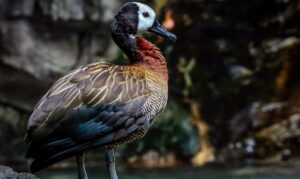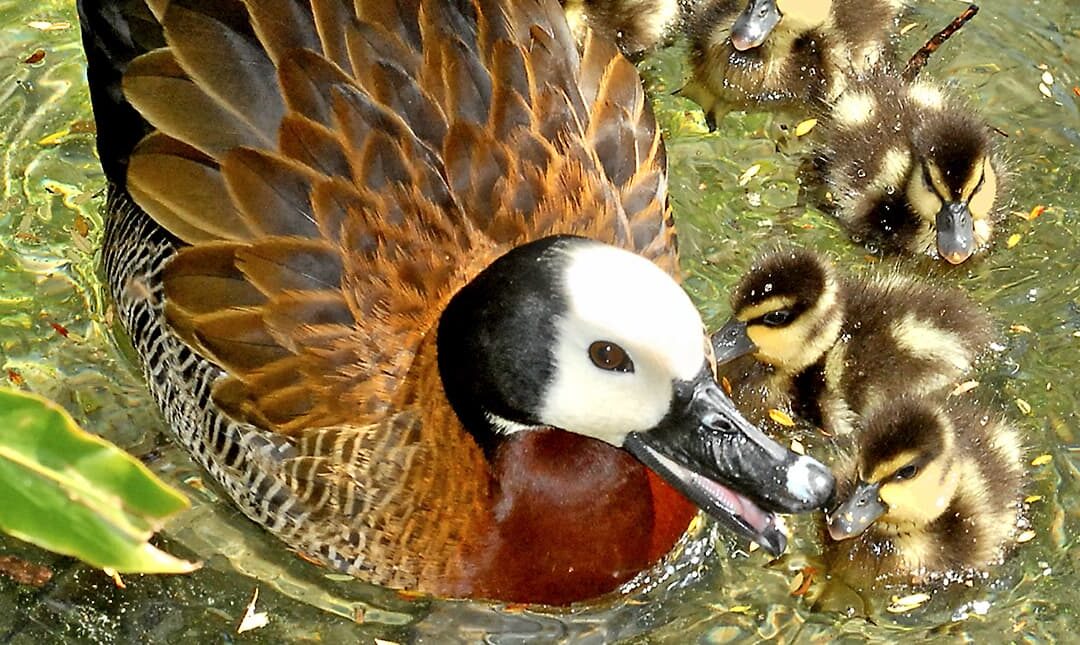About
Whistling ducks are named for their unique calls. Rather than quacking, they produce a high-pitched, three-note whistle. These birds are sometimes called tree ducks because they occasionally perch in trees. Their necks and legs are longer than those of other ducks. As you might expect, they have white faces.
White-faced whistling ducks are social birds that gather in flocks that may number more than 1,000 individuals. They are adapted to an aquatic lifestyle, with webbed feet and a bill designed to forage in the mud and strain out invertebrates. They are fast swimmers and dive only when hunting for food. As with other waterfowl, a special gland near their tails secretes a waxy oil that they rub over their feathers to waterproof them. Like all birds, whistling ducks need to replace worn and damaged feathers. So, once a year after the breeding season, they molt, losing their primary feathers. New primaries grow in over a three-week period. During molting, they cannot swim or fly and must remain on land.
While breeding, they nest individually or in small groups. This species is believed to be perennially monogamous, meaning that males and females form pairs that stay together even outside of breeding season. The rainy season typically marks the start of the breeding season. Nests may be in leaves on the ground or among tall grass or reeds. A female lays eight to 12 eggs that hatch in about 28 days. Both parents incubate the eggs, protect the nest, and guard the young. The ducklings are precocious and can begin feeding themselves within a day of hatching. They fledge in about eight weeks.


Habitat
White-faced whistling ducks are found in open wetland areas in sub-Saharan Africa and South America. Their habitat includes freshwater lakes, lagoons, marshes, and rice paddies.
Diet
These ducks eat grass, seeds, aquatic plants, insects, mollusks, and crustaceans.
Physical Characteristics
Body length is about two feet, and weight is one or two pounds. Lifespan is 10 to 12 years.
LOCATION WITHIN THE ZOO
You’ll find this bird in the Aviary. See Zoo Map.



